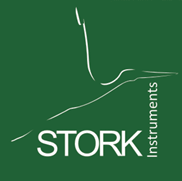
Lesson 5
Choosing a Hygrometer
Step 1 - Measurement units and humidity levels
The following table is a classification of different humidity levels and will help explain how the choice of a hygrometer can be made for different applications.
| Level | ºC dewpoint | ºF dewpoint | parts per million by volume | Relative Humidity at 23ºC temp. |
| Trace | -100 to -75 | -148 to -100 | 0.01 to 1.41 | 0 to 0 |
| Low | -75 to -40 | -100 to -40 | 1.41 to 126 | 0 to 0.5 |
| Intermediate | -40 to -10 | -40 to -14 | 126 to 2,571 | 0.5 to 10.4 |
| Normal | -10 to +23 | +14 to +73 | 2,571 to 28,000 | 10.4 to 100 |
| High | +23 to +99 | +73 to +210 | 28,000 to 1,340,000 |
If the application is to measure ambient air from the point of view of human or animal "comfort" then the appropriate measurement unit is usually Relative Humidity expressed as a percentage (%rh). The same may be true of pharmaceutical and food industry applications where many established standards for conditions of manufacture or packing are often expressed in the same units. Relative Humidity is a unit which is dependent not only on the water vapor content but also on temperature. If the temperature changes, so does the relative humidity even though the water contained by the air or gas sample has remained the same. It is a unit which is suitable for normal to high humidity ranges (see table X for level classifications). As will be seen from this table, the relative humidity values approach zero as the intermediate level is reached and so become inappropriate in the lower levels.
If the application is to measure dried compressed air or industrial gases then absolute humidity units are generally specified. Degrees dewpoint (ºC & ºF usually) are the units universally used from intermediate to trace levels (and often in the normal to high levels too where it is clear that absolute humidity readings are needed and not relative humidity). Parts per million or billion are favored in the low to trace level regions. Other units, for example grams of water per cubic meter of dry gas (gm/m3) or pounds of water per cubic foot (lbs/cu3), are sometimes favored - particularly in the petrochemical industries.
Step 2 - Measurement method by instrument type
For occasional measurements in the normal to high levels, where precision is not a requirement, a wet and dry bulb psychrometer is not a bad choice. And even hair hygrometers should not be dismissed out of hand. These two classical methods can often provide more reliable results then than some of the capacitive/resistive electronic hygrometers which are on the market.
For the normal to high humidity levels, capacitive/resistive relative humidity hygrometers can achieve typical accuracy levels of +/-2%rh to +/-3%rh in the drier regions and +/- 5%rh to +/-10% in the wetter regions.
| An important word of caution is appropriate at this point. All hygrometer sensors based on the capacitive/resistive principle must be recalibrated at intervals. What this interval should be depends on the maker and on the application. For the best instruments, such as the STORK DEWCom which uses a very stable bi-ceramic dielectric in its response layer, the recommended re-calibration interval is 1 to 2 years. Other makes may need re-calibration every 6 months. |
Impedance dewpoint sensors fall into a different category than capacitive/resistance sensors for relative humidity measurement. This is because they normally operate in the low to trace level ranges, where the amount of water vapor is very low and the hygroscopic response layer must be exceptionally sensitive. The manufacture of such a response layer is technically challenging and the number of producers of hygrometers based on this type of sensor is limited. Typical accuracies for the type are in the region of +/-2ºC to +/-3ºC dewpoint.
The chilled mirror dewpointmeter is the only type of hygrometer which can be regarded as having sufficient accuracy as well as long term stability to be used as a transfer standard between the primary humidity standards such as NIST, NPL, GUM etc and production hygrometers. The type also serves in industries and laboratories where precision and stability must be guranteed. The best examples of this type, such as the STORK DEWRay achieve accuracies of +/-0.05 to 0.01 in the Integra version.
